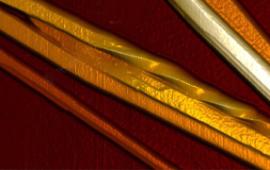Breakthrough discovery could have impact on neurodegenerative diseases

In Summary
- Toxic clumps related to neurodegenerative diseases can change form more than previously expected
- Discovery could have impact on therapies and diagnostics for neurodegenerative diseases
Neurodegenerative diseases could be stopped in their tracks due to new research from Swinburne University of Technology, University of Luxembourg, Shanghai University and ETH Zurich.
New research published in Nature Communications shows that toxic clumps of material, similar to those found in the brain of people suffering from Alzheimer’s disease can change form more than previously expected. This gives scientists a better understanding of these materials and how they affect problems in the brain.
Researcher Dr Nicholas Reynolds of Swinburne’s says this is a meaningful discovery for medical researchers.
“This increase in knowledge may have benefits for medical researchers in developing new therapies and diagnostics for neurodegenerative diseases such as Alzheimer’s, Parkinson’s, Mad Cow Disease or Motor Neurone disease,” he says.
Toxic clumps, often known as plaques or tangles, are made up of thousands of proteins that stick together into tiny fibres called amyloid fibrils.
Previously, it was thought that amyloid fibrils represented the final ‘most stable’ form of protein however, researchers were able to observe these amyloid fibrils further changing shape into a rarely seen amyloid crystal.
“Our research suggests that amyloid crystals, not amyloid fibrils, are the most stable form of protein,” says Dr Reynolds.
Conducting the research
Researchers used amyloid fibrils generated by fragments of proteins from animal, human and disease related sources to reach their conclusions.
They found under certain conditions that the fibrils can be transformed into a protein structure that has seldom been observed in the laboratory: an amyloid crystal.
The scientists resolve for the first time the physical mechanism by which this transition takes place: this involves untwisting the fibril to form elongated, matchstick-like amyloid crystals without the need to unfold and refold the protein; that is, by simply getting rid of torsional energy associated with the twisted amyloid fibrils.
“Our results shed new light on the self-organisation of proteins that have a tendency to form amyloids, and on the most stable status of proteins in general,” says Raffaele Mezzenga, group leader at ETH Zurich and coordinator of the study.
“Our discovery means that the energy landscape of protein folding must now be revisited”, he concludes.
For the full research paper, see: ‘Competition between crystal and fibril formation in molecular mutations of amyloidogenic peptides’

